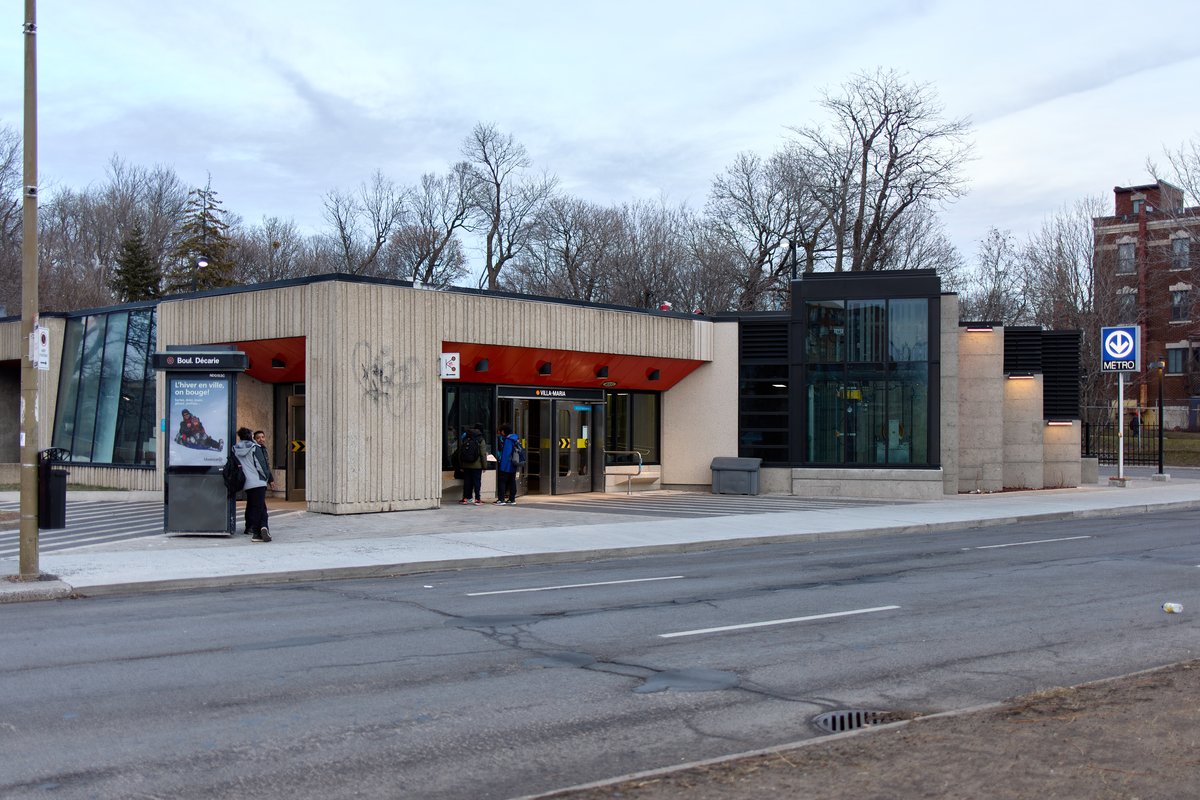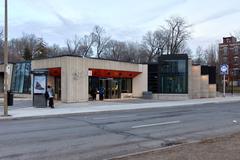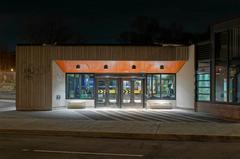
Villa Maria Montreal Visiting Hours, Tickets, and Historical Sites Guide
Date: 15/06/2025
Introduction to Villa Maria in Montreal
Nestled in Montreal’s Côte-des-Neiges–Notre-Dame-de-Grâce borough, Villa Maria stands as a testament to the city’s historical grandeur, pioneering educational legacy, and lush green spaces. Established in 1854 by the Sisters of the Congregation of Notre-Dame—an order founded in 1658—Villa Maria has transitioned from a neoclassical country estate into a vibrant educational institution and a cherished cultural landmark. The estate’s origins trace back to a mansion built for Sir James Monk, Chief Justice of Lower Canada, which later served as the Governor General’s residence, highlighting its deep connections to Montreal’s political and social history (Villa Maria History; Parks Canada).
Spanning approximately 21 hectares, Villa Maria offers visitors a unique opportunity to explore a site featuring Neo-Palladian architecture, preserved institutional expansions, and tranquil green spaces. Its transformation into a bilingual boarding school for girls marked a pivotal moment in Canadian education, particularly for women, with the later addition of Marianopolis College reinforcing its role in advanced academic programs (Archives CND).
Today, Villa Maria remains an active educational campus and a designated National Historic Site of Canada, recognized for its architectural beauty and historical significance. This comprehensive guide covers Villa Maria’s history, visiting hours, ticketing, accessibility, guided tours, travel tips, and nearby attractions to ensure you have a memorable and insightful visit (Villa Maria Official Website; Congrégation de Notre-Dame Heritage Profile).
Table of Contents
- Introduction
- Early Origins and Estate Development
- Educational Legacy and Expansion
- Architectural and Landscape Heritage
- Social and Cultural Impact
- Visiting Villa Maria: Hours, Tickets, and Tours
- Travel Tips and Accessibility
- Community Role and Future Prospects
- Transition to Co-Education and Modernization
- Frequently Asked Questions (FAQs)
- Visitor Experience: Highlights
- Getting There and Practical Tips
- Nearby Attractions
- Facilities and Amenities
- Contact and Further Information
- Summary and Visitor Recommendations
- References and Further Reading
Early Origins and Estate Development
Villa Maria’s estate, one of Montreal’s largest privately held green spaces, dates back over 165 years. The Sisters of the Congregation of Notre-Dame acquired the estate in 1854, transforming the neoclassical mansion built for Sir James Monk into a center for education and religious life. The CND’s stewardship preserved both the estate’s architectural integrity and natural beauty, cementing its status as a treasured Montreal historical site.
Educational Legacy and Expansion
From its founding as a boarding school for girls, Villa Maria quickly established itself as a cornerstone of Montreal’s educational landscape. The addition of Marianopolis College in 1926 expanded academic opportunities, especially in pre-university programs, and showcased the CND’s commitment to bilingual, community-oriented education.
Architectural and Landscape Heritage
The estate is a blend of 19th-century neoclassical design and purposeful institutional expansions. The central mansion, with its Neo-Palladian features, is complemented by Marianopolis College and various convent buildings. Expansive lawns and mature trees create a peaceful oasis within the city, adored by both the local community and visitors.
Social and Cultural Impact
Villa Maria has profoundly influenced generations of students—particularly women who have made significant contributions in Quebec’s cultural, political, and academic spheres. The legacy of the Sisters of the Congregation of Notre-Dame, who managed the estate for over a century, adds a unique spiritual dimension to its enduring educational mission.
Visiting Villa Maria: Hours, Tickets, and Tours
Visiting Hours:
- Monday to Friday: 9:00 AM – 5:00 PM
- Saturday and Sunday: 10:00 AM – 4:00 PM
Admission:
- General Admission: Free
- Guided Tours: Weekends and by appointment ($10 per person)
- Special events: Check the official Villa Maria website for updates
Visitor Policies:
- Photography permitted outdoors; permission required for interior photos
- Wheelchair-accessible paths throughout the grounds
Guided Tours: Expert-led tours are available, highlighting Villa Maria’s architectural features, gardens, and educational heritage. Advance booking is recommended.
Travel Tips and Accessibility
Villa Maria is conveniently located adjacent to the Villa-Maria Metro station, providing easy access via public transit. Limited on-site parking is available, with additional street and public parking nearby.
Best Times to Visit: Spring and early fall for pleasant weather and vibrant gardens. Weekdays are quieter.
Nearby Attractions: Notre-Dame Basilica, McGill University campus, Mount Royal Park, and the Monkland Village.
Community Role and Future Prospects
The Congregation of Notre-Dame plans to sell the estate after the school’s lease ends in July 2030, but strong heritage protections and community advocacy are in place to preserve Villa Maria’s legacy. Marianopolis College has secured its portion of the estate, ensuring an educational presence will continue. City and community leaders are committed to maintaining Villa Maria as a vital cultural and educational landmark.
Transition to Co-Education and Modernization
In 2016, Villa Maria transitioned from an all-girls school to a co-educational model, reflecting modern values of inclusivity and diversity. The curriculum now includes specialized study profiles in STEAM, entrepreneurship, sciences, and law and international studies, preparing students for global challenges (Villa Maria Profiles).
Frequently Asked Questions (FAQs)
Q: What are Villa Maria’s visiting hours?
A: Monday to Friday, 9:00 AM – 5:00 PM; Saturday and Sunday, 10:00 AM – 4:00 PM (special events may vary).
Q: Is there an admission fee?
A: General admission is free; guided tours typically require a fee.
Q: Are guided tours available?
A: Yes, on weekends and by appointment.
Q: Is Villa Maria wheelchair accessible?
A: Yes, accessible paths are available.
Q: Can I take photos at Villa Maria?
A: Yes, outdoors; indoor photography requires permission.
Q: How do I get to Villa Maria by public transport?
A: The Villa-Maria Metro station on the Orange Line is adjacent to the site.
Q: Is parking available?
A: Limited on-site; public transit is recommended.
Visitor Experience: Architectural and Cultural Highlights
Architectural Heritage and Evolution
Origins and Neo-Palladian Design:
The original Monklands mansion, built in 1803, showcases Neo-Palladian architecture—marked by symmetry, classical columns, and harmonious proportions (Parks Canada). The estate’s design set a precedent for institutional expansion while maintaining architectural unity (Villa Maria History).
Expansion and Preservation:
Through the 19th and 20th centuries, new wings and pavilions—including the Notre-Dame-de-Lourdes (1856) and Notre-Dame-des-Anges (1870)—were added to meet educational needs while conserving the estate’s historic character. Monk House was declared a historic monument by both federal and provincial governments (Archives CND).
Cultural Significance
Educational Innovation:
Villa Maria was among the first in Canada to provide rigorous academics for women, with alumni breaking barriers at universities in Canada and the U.S. The school’s bilingual environment continues to reflect Montreal’s multicultural identity.
Notable Guests:
Villa Maria has hosted dignitaries such as King Edward VII and Canadian political leaders, underscoring its prominence in Canadian history (Villa Maria Notable Guests).
Exploring the Campus
Visitors can admire the stately Monk House, landscaped gardens, and the harmonious integration of historic and modern architecture. During special events, interior heritage spaces—like the chapel and ceramic art studio—may be accessible.
Visuals and Interactive Media
High-quality images and occasional virtual tours are available on the official website and heritage portals, enhancing the visitor experience.
Getting There and Practical Tips
- Address: 4245, boulevard Décarie, Montreal, Quebec H4A 3K4
- Public Transit: Villa-Maria Metro station (Orange Line); multiple STM bus routes
- Accessibility: Metro station and pathways are wheelchair friendly
- Bicycle: Racks available at the Metro station; nearby bike lanes
- By Car: Limited parking; public transit highly recommended
Navigation Tip: Use the Moovit app for real-time transit updates.
Facilities and Amenities
- Restrooms: Available in the Metro station; limited on-site
- Food: No on-site café, but Monkland Village and Sherbrooke Street offer dining nearby
- Wi-Fi: Free at the Metro station and some public areas
Nearby Attractions
- Monkland Village: Trendy shops and eateries
- Mount Royal Park: Hiking and city views
- Westmount: Historic homes and parks
- Downtown Montreal: Museums, shopping, culture
Contact and Further Information
- Villa Maria School Official Website
- Congrégation de Notre-Dame Heritage Profile
- STM Public Transit Website
Summary and Visitor Recommendations
Villa Maria is more than a historical estate; it’s a living symbol of Montreal’s layered past, educational advancement, and cultural diversity. Its blend of 19th-century architecture, lush green spaces, and ongoing educational mission make it a must-visit for those interested in Montreal’s heritage (Parks Canada; Villa Maria History).
Visitor Tips:
- Plan your visit during special events for full access.
- Use public transit for convenience.
- Check official schedules and book guided tours in advance.
Despite future changes in ownership, Villa Maria’s strong heritage protections and community support ensure its preservation as an educational and cultural landmark. Download the Audiala App for audio tours and event updates, and follow Villa Maria and Marianopolis College on social media for the latest news.
References and Further Reading
- Villa Maria History, 2024, Congregation of Notre-Dame
- Parks Canada, 2024, National Historic Sites
- Archives CND, 2024, Virtual Archives of the Congregation of Notre-Dame
- Villa Maria Official Website, 2025
- Congrégation de Notre-Dame Heritage Profile, 2024
- STM Public Transit Website, 2025
- Audiala App, 2025





























































































































